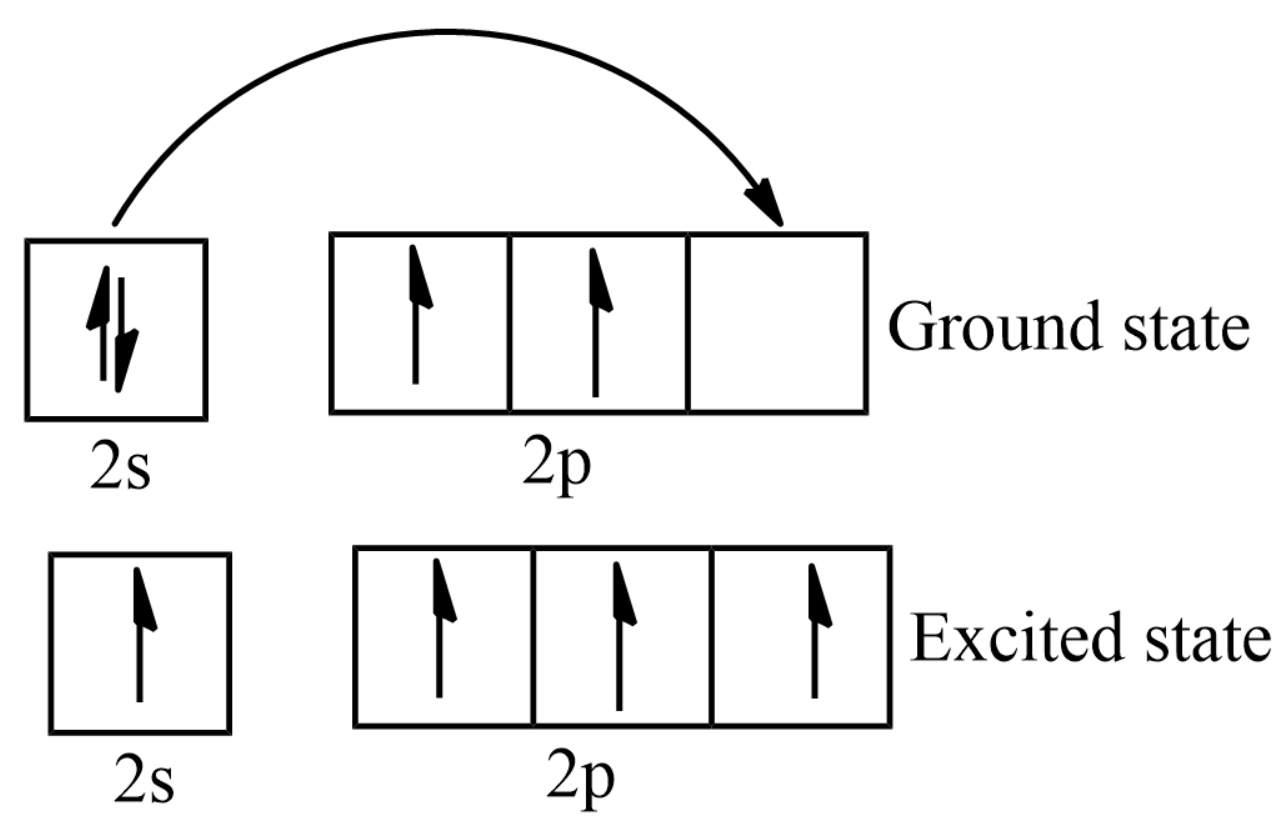
What is the excited state of carbon?
Answer
418.2k+ views
1 likes
Hint: An excited-state of an atom is a state of the atom in which the total energy of the electrons can be lowered by transferring one or more electrons to different orbitals which are higher in energy.
When we write the electronic configuration for carbon the first two electrons will go in the
Complete answer:
The arrangement of electrons in the atomic orbitals of an atom is known as the electron configuration of that atom. Electron configurations are determined using the periodic table. Carbon is the sixth element in the periodic table with a total of 6 electrons. Hence the atomic number of carbon is 6.
From this and already mentioned hint we can write that
The ground state electron configuration of carbon is

The total energy of the electrons in the carbon atom will be elevated by exciting an electron from the
Note:
The excited state is the state of carbon when it undergoes chemical bonding to form four covalent bonds, like in methane. However we have found out experimentally that all four bonds of methane have the same energy, which can only be explained by the concept that orbitals hybridize to form four
When we write the electronic configuration for carbon the first two electrons will go in the
Complete answer:
The arrangement of electrons in the atomic orbitals of an atom is known as the electron configuration of that atom. Electron configurations are determined using the periodic table. Carbon is the sixth element in the periodic table with a total of 6 electrons. Hence the atomic number of carbon is 6.
From this and already mentioned hint we can write that
The ground state electron configuration of carbon is

The total energy of the electrons in the carbon atom will be elevated by exciting an electron from the
Note:
The excited state is the state of carbon when it undergoes chemical bonding to form four covalent bonds, like in methane. However we have found out experimentally that all four bonds of methane have the same energy, which can only be explained by the concept that orbitals hybridize to form four
Latest Vedantu courses for you
Grade 11 Science PCM | CBSE | SCHOOL | English
CBSE (2025-26)
School Full course for CBSE students
₹41,848 per year
Recently Updated Pages
Master Class 12 Business Studies: Engaging Questions & Answers for Success

Master Class 12 English: Engaging Questions & Answers for Success

Master Class 12 Social Science: Engaging Questions & Answers for Success

Master Class 12 Chemistry: Engaging Questions & Answers for Success

Class 12 Question and Answer - Your Ultimate Solutions Guide

Master Class 11 Economics: Engaging Questions & Answers for Success

Trending doubts
Draw a labelled sketch of the human eye class 12 physics CBSE

a Tabulate the differences in the characteristics of class 12 chemistry CBSE

Which one of the following is a true fish A Jellyfish class 12 biology CBSE

Why is the cell called the structural and functional class 12 biology CBSE

Differentiate between homogeneous and heterogeneous class 12 chemistry CBSE

Write the difference between solid liquid and gas class 12 chemistry CBSE




